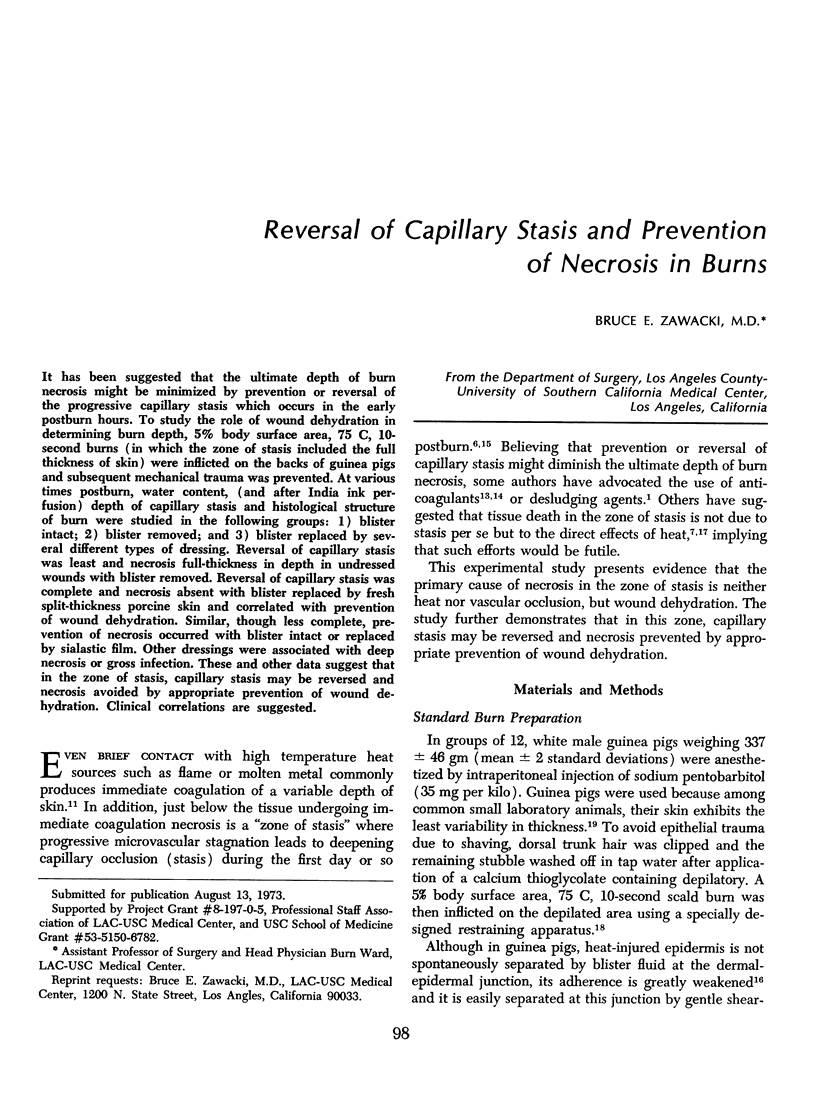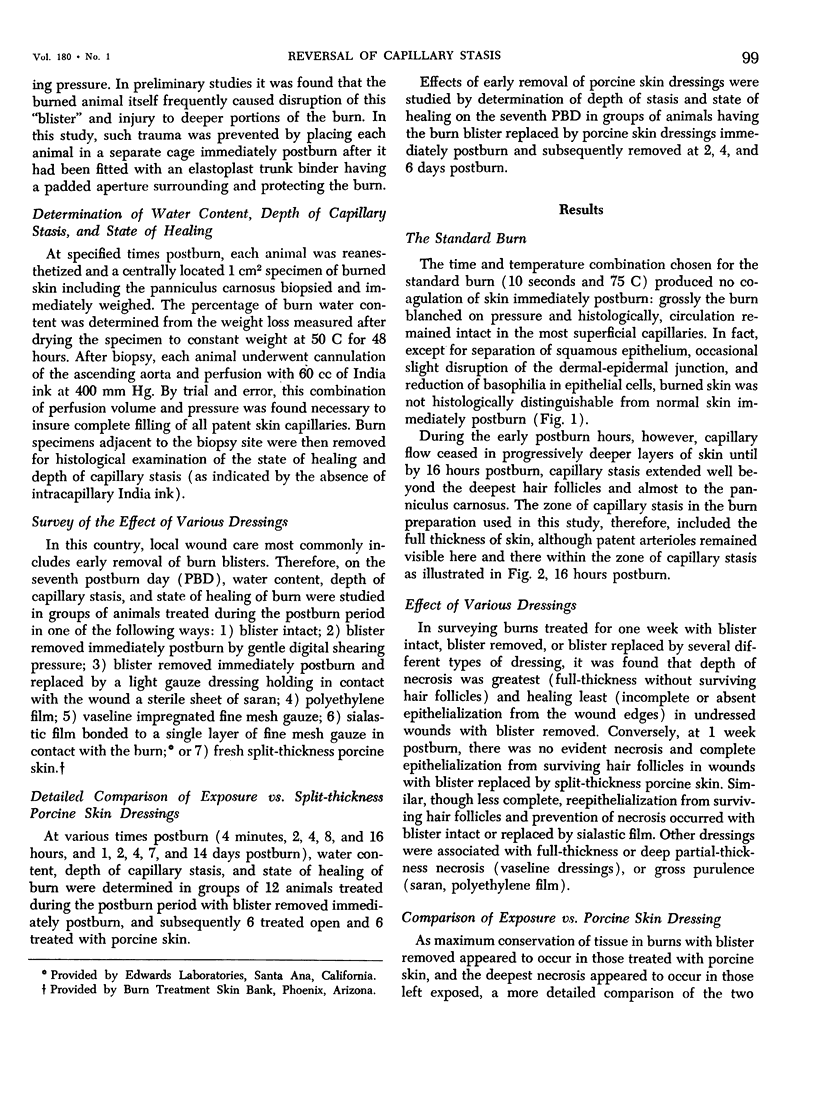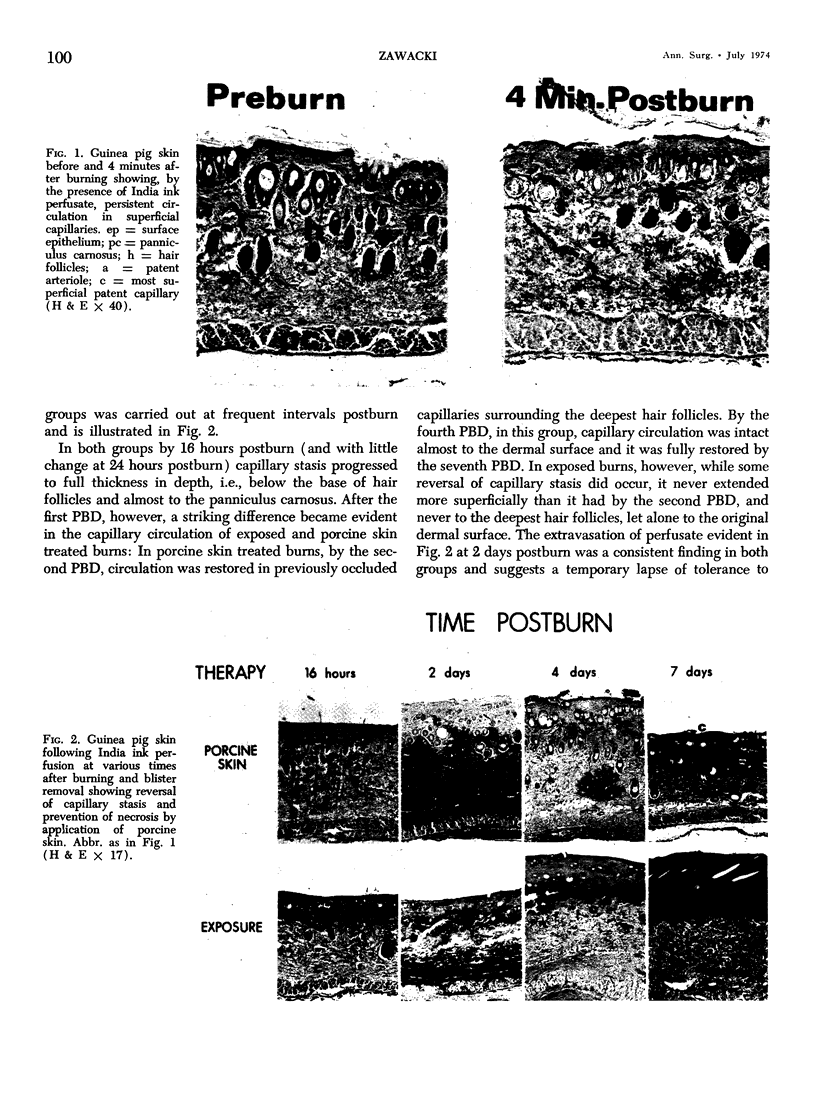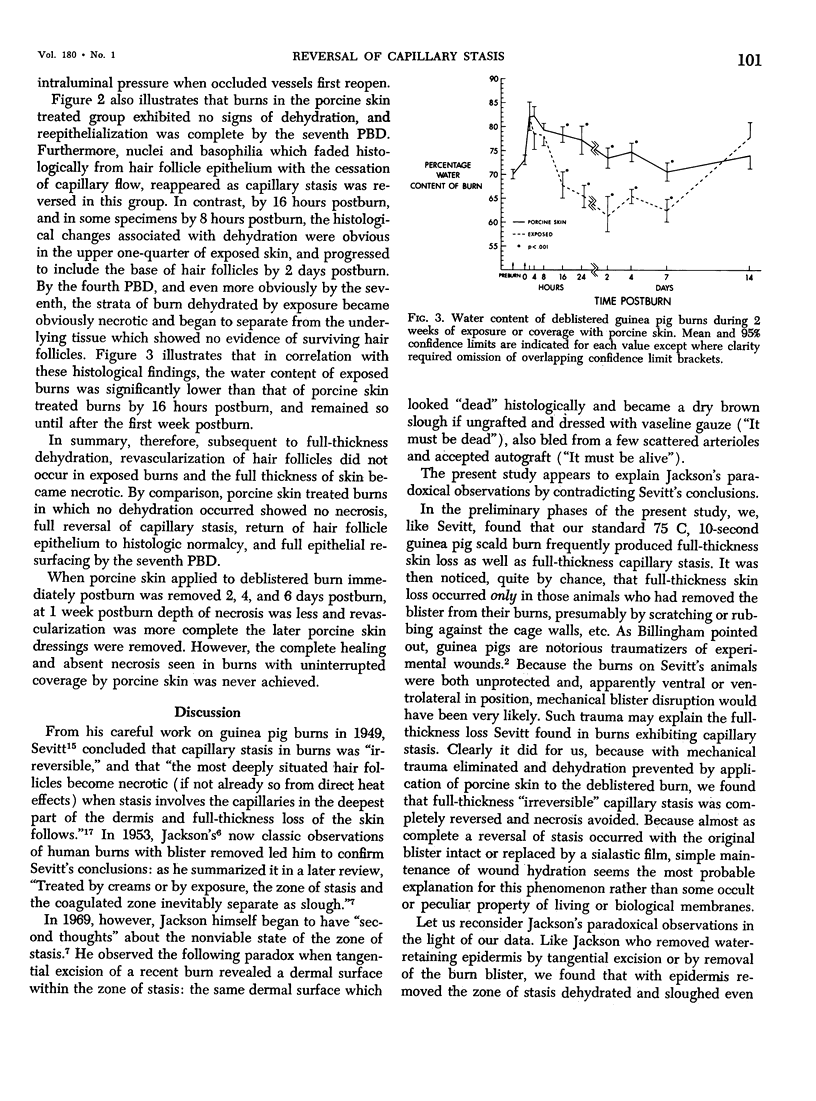Abstract
It has been suggested that the ultimate depth of burn necrosis might be minimized by prevention or reversal of the progressive capillary stasis which occurs in the early postburn hours. To study the role of wound dehydration in determining burn depth, 5% body surface area, 75 C, 10 second burns (in which the zone of stasis included the full thickness of skin) were inflicted on the backs of guinea pigs and subsequent mechanical trauma was prevented. At various times postburn, water content, (and after India ink perfusion) depth of capillary stasis and histological structure of burn were studied in the following groups: 1) blister intact; 2) blister removed; and 3) blister replaced by several different types of dressing. Reversal of capillary stasis was least and necrosis full-thickness in depth in undressed wounds with blister removed. Reversal of capillary stasis was complete and necrosis absent with blister replaced by fresh split-thickness porcine skin and correlated with prevention of wound dehydration. Similar, though less complete, prevention of necrosis occurred with blister intact or replaced by sialastic film. Other dressings were associated with deep necrosis or gross infection. These and other data suggest that in the zone of stasis, capillary stasis may be reversed and necrosis avoided by appropriate prevention of wound dehydration. Clinical correlations are suggested.
Full text
PDF




Images in this article
Selected References
These references are in PubMed. This may not be the complete list of references from this article.
- Bromberg B. E. Burn wound management with biologic dressings. N Y State J Med. 1970 Jun 15;70(12):1645–1646. [PubMed] [Google Scholar]
- FORAGE A. V. The effects of removing the epidermis from burnt skin. Lancet. 1962 Oct 6;2(7258):690–693. doi: 10.1016/s0140-6736(62)90504-4. [DOI] [PubMed] [Google Scholar]
- JACKSON D. M. [The diagnosis of the depth of burning]. Br J Surg. 1953 May;40(164):588–596. doi: 10.1002/bjs.18004016413. [DOI] [PubMed] [Google Scholar]
- Jackson D. M. Second thoughts on the burn wound. J Trauma. 1969 Oct;9(10):839–862. doi: 10.1097/00005373-196910000-00003. [DOI] [PubMed] [Google Scholar]
- Lee Y. C. Early heterografting of partial-thickness burns. J Trauma. 1972 Sep;12(9):818–820. doi: 10.1097/00005373-197209000-00012. [DOI] [PubMed] [Google Scholar]
- Miller T. A., Switzer W. E., Foley F. D., Moncrief J. A. Early homografting of second degree burns. Plast Reconstr Surg. 1967 Aug;40(2):117–125. doi: 10.1097/00006534-196708000-00002. [DOI] [PubMed] [Google Scholar]
- Miller T. A., White W. L. Healing of second degree burns. Comparison of effects of early application of homografts and coverage with tape. Plast Reconstr Surg. 1972 May;49(5):552–557. [PubMed] [Google Scholar]
- ORDER S. E., MASON A. D., Jr, SWITZER W. E., MONCRIEF J. A. ARTERIAL VASCULAR OCCLUSION AND DEVITALIZATION OF BURN WOUNDS. Ann Surg. 1965 Apr;161:502–508. doi: 10.1097/00000658-196504000-00003. [DOI] [PMC free article] [PubMed] [Google Scholar]
- Robb H. J. Dynamics of the microcirculation during a burn. Arch Surg. 1967 Jun;94(6):776–780. doi: 10.1001/archsurg.1967.01330120030007. [DOI] [PubMed] [Google Scholar]
- Saliba M. J., Jr Heparin efficacy in burns. II. Human thermal burn treatment with large doses of topical and parenteral heparin. Aerosp Med. 1970 Nov;41(11):1302–1306. [PubMed] [Google Scholar]
- Walker H. L., Mason A. D., Jr A standard animal burn. J Trauma. 1968 Nov;8(6):1049–1051. doi: 10.1097/00005373-196811000-00006. [DOI] [PubMed] [Google Scholar]
- Zawacki B. E., Jones R. J. Standard depth burns in the rat: the importance of the hair growth cycle. Br J Plast Surg. 1967 Oct;20(4):347–354. doi: 10.1016/s0007-1226(67)80065-1. [DOI] [PubMed] [Google Scholar]




